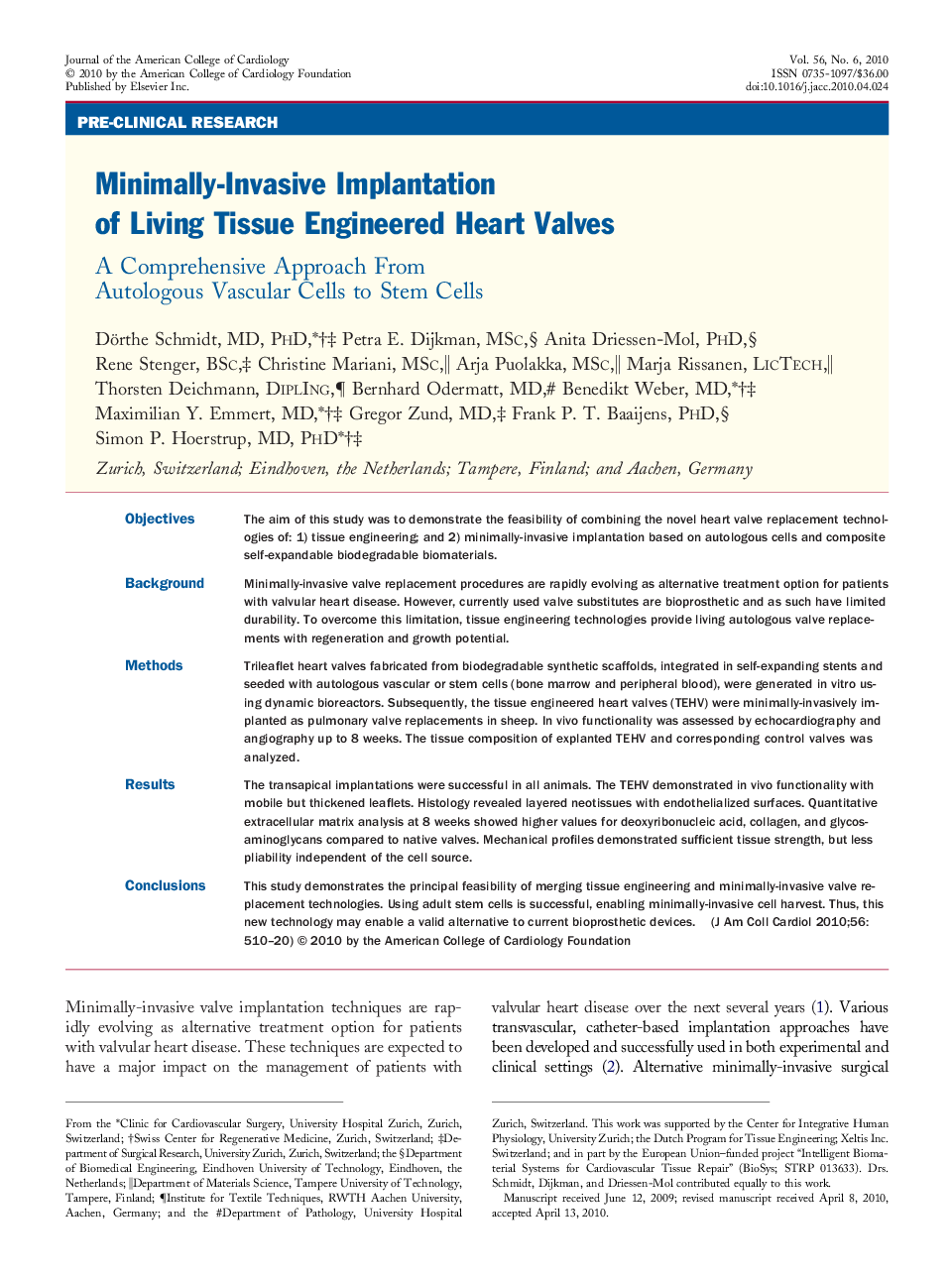| کد مقاله | کد نشریه | سال انتشار | مقاله انگلیسی | نسخه تمام متن |
|---|---|---|---|---|
| 2949117 | 1577306 | 2010 | 11 صفحه PDF | دانلود رایگان |

ObjectivesThe aim of this study was to demonstrate the feasibility of combining the novel heart valve replacement technologies of: 1) tissue engineering; and 2) minimally-invasive implantation based on autologous cells and composite self-expandable biodegradable biomaterials.BackgroundMinimally-invasive valve replacement procedures are rapidly evolving as alternative treatment option for patients with valvular heart disease. However, currently used valve substitutes are bioprosthetic and as such have limited durability. To overcome this limitation, tissue engineering technologies provide living autologous valve replacements with regeneration and growth potential.MethodsTrileaflet heart valves fabricated from biodegradable synthetic scaffolds, integrated in self-expanding stents and seeded with autologous vascular or stem cells (bone marrow and peripheral blood), were generated in vitro using dynamic bioreactors. Subsequently, the tissue engineered heart valves (TEHV) were minimally-invasively implanted as pulmonary valve replacements in sheep. In vivo functionality was assessed by echocardiography and angiography up to 8 weeks. The tissue composition of explanted TEHV and corresponding control valves was analyzed.ResultsThe transapical implantations were successful in all animals. The TEHV demonstrated in vivo functionality with mobile but thickened leaflets. Histology revealed layered neotissues with endothelialized surfaces. Quantitative extracellular matrix analysis at 8 weeks showed higher values for deoxyribonucleic acid, collagen, and glycosaminoglycans compared to native valves. Mechanical profiles demonstrated sufficient tissue strength, but less pliability independent of the cell source.ConclusionsThis study demonstrates the principal feasibility of merging tissue engineering and minimally-invasive valve replacement technologies. Using adult stem cells is successful, enabling minimally-invasive cell harvest. Thus, this new technology may enable a valid alternative to current bioprosthetic devices.
Journal: Journal of the American College of Cardiology - Volume 56, Issue 6, 3 August 2010, Pages 510–520